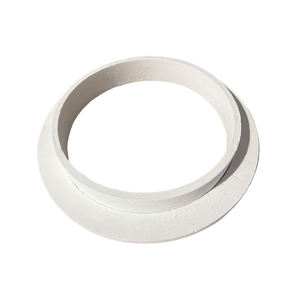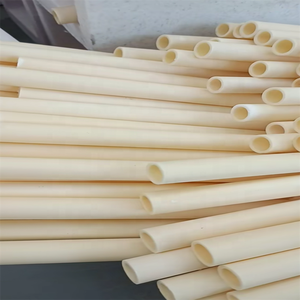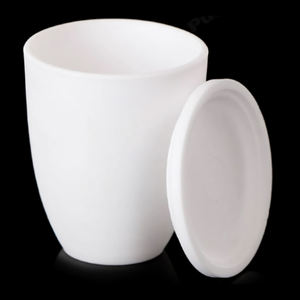Discover Premium Ceramic Products | Durability & Elegance United | Advanced Ceramics
1. Introduction
Just 24 hours ago, a major foundry in Ohio reported unexpected crucible failures during high-temperature aluminum melting, sparking renewed discussion in industrial forums about the proper handling of silicon carbide crucibles. While prized for their exceptional heat resistance and durability, these crucibles can underperform—or even crack—if not used correctly.

Whether you’re in metallurgy, lab research, or even exploring high-end ceramic cookware like silicon carbide ceramic baking dishes, understanding how to maintain and troubleshoot your silicon carbide crucible is essential. This guide walks you through the five most common problems and how to solve them—fast.
2. Problem 1: Thermal Shock Cracking
Silicon carbide crucibles are tough, but sudden temperature changes can still cause cracks. This is especially common when placing a cold crucible directly into a hot furnace.
How to fix it:
- Always preheat your crucible gradually. Start at 200°C (392°F) for 30 minutes, then increase in 200°C increments until you reach your target temperature.
- Avoid pouring cold materials into a hot crucible. Pre-warm your charge if possible.
- Store crucibles in a dry, room-temperature environment to prevent moisture absorption, which worsens thermal shock.
3. Problem 2: Chemical Contamination

Despite high purity, silicon carbide can react with certain metals or slags—especially at extreme temperatures—leading to contamination of your melt.
Solution steps:
- Never melt reactive metals like titanium or zirconium in standard silicon carbide crucibles. Use a silicon nitride crucible instead, as silicon nitride ceramic offers better inertness for such applications.
- For non-ferrous alloys like aluminum or copper, ensure your crucible is labeled for that specific use.
- Clean residues thoroughly after each use with a soft brush—never use steel wool or abrasive tools that can embed particles.
4. Problem 3: Erosion and Wear
Over time, the inner surface of your silicon carbide crucible may erode, especially if used with aggressive fluxes or stirred frequently.

Preventive measures:
- Limit mechanical stirring. Use electromagnetic stirring when possible.
- Choose high-density RBSiC (Reaction Bonded Silicon Carbide) crucibles for longer life—they’re denser and more wear-resistant than standard variants.
- Inspect your crucible weekly for thinning walls or pitting. Replace it once wall thickness drops below 70% of original.
5. Problem 4: Confusion with Similar Materials
Many users mistakenly assume all advanced ceramics behave the same. For example, boron carbide vs silicon carbide: while both are hard, boron carbide is more brittle and expensive, and rarely used for crucibles.
Key distinctions:
- Silicon carbide excels in thermal conductivity and oxidation resistance—ideal for crucibles, burner nozzles, and silicon carbide ceramic tubes.
- Silicon nitride, though less thermally conductive, offers superior fracture toughness and is preferred for custom silicon nitride heat shields or silicon nitride rings in high-vibration environments.
- Don’t substitute one for the other without checking compatibility charts from your silicon nitride crucible factory or supplier.
6. Problem 5: Misuse in Non-Industrial Settings
Surprisingly, some hobbyists try repurposing industrial silicon carbide items—like silicon carbide discs or silicon carbide ceramic piping—for kitchen use. This is unsafe.
Important safety note:
- Only use cookware explicitly labeled as food-safe, such as silicon carbide ceramic dinner plates, silicon carbide baking ceramic dish, or silicon carbide ceramic casserole dish with lid.
- Industrial-grade silicon carbide (e.g., silicon carbide brick, silicon carbide ceramic columns, or silicon carbide tube furnace components) may contain binders or impurities not approved for food contact.
- Stick to certified kitchenware like silicon carbide white ceramic plates or silicon carbide ceramic ramekins designed for culinary use.
7. Bonus Tip: Storage and Handling Best Practices
Even when not in use, improper storage can ruin your crucible.
- Store vertically on a clean, dry rack—never stack crucibles.
- Keep away from humidity. Moisture can lead to oxidation during next use.
- Label each crucible with usage history (material melted, max temp reached) to track lifespan.
8. Conclusion
Silicon carbide crucibles are powerful tools—but only when used correctly. By avoiding thermal shock, preventing contamination, choosing the right ceramic for your application (whether it’s a silicon carbide ring or a silicon carbide ceramic salad bowl), and following proper maintenance, you’ll extend their life and ensure consistent performance. Whether you’re in a lab, foundry, or kitchen, respect the material, and it will serve you well.
Our Website founded on October 17, 2012, is a high-tech enterprise committed to the research and development, production, processing, sales and technical services of ceramic relative materials such as 5. Our products includes but not limited to Boron Carbide Ceramic Products, Boron Nitride Ceramic Products, Silicon Carbide Ceramic Products, Silicon Nitride Ceramic Products, Zirconium Dioxide Ceramic Products, etc. If you are interested, please feel free to contact us.

